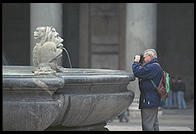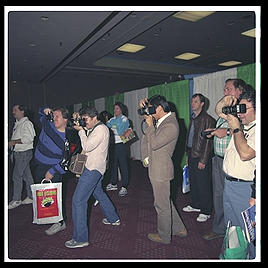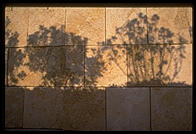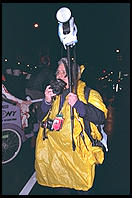
Kodak Professional Photoguide
by Philip Greenspun; created 1998
Site Home : Photography : Kodak Professional Photoguide

by Philip Greenspun; created 1998
Site Home : Photography : Kodak Professional Photoguide
Kodak Professional Photoguide by Eastman Kodak staff members, 1996 Silver Pixel Press. ISBN 0-87985-798-6. 56 pages. You can order this book from amazon.com .
 If you
had this book, which you'd find in virtually every professional photographer's
camera bag, you wouldn't need to ask any questions online. In fact, the
Kodak Professional Photoguide contains virtually all the information
that you'd get in a one-year photography course.
If you
had this book, which you'd find in virtually every professional photographer's
camera bag, you wouldn't need to ask any questions online. In fact, the
Kodak Professional Photoguide contains virtually all the information
that you'd get in a one-year photography course.
Confused about exposure? The last page is an 18% gray card. Hold it up in the same light as your subject, meter off the card and you'll get the correct exposure regardless of subject reflectance. Can't remember how to use a meter? See page 19. Too dark for your meter? Turn to the existing light exposure dial and turn until the film speed is across from "moonlighted snowscapes -- full moon".
Worried that your 20 second exposure will induce reciprocity failure in Royal Gold 25? Turn to the film data section and you'll see that no reciprocity correction is required. [Sadly, the film data section contains no information for Fuji products.]
 The section on
filters for color temperature control in color photography and contrast control
in black & white photography is extensive and probably a little overly
technical for most people. Still, there is a decent half-page summary of what to
do to control sky and cloud appearance in B&W.
The section on
filters for color temperature control in color photography and contrast control
in black & white photography is extensive and probably a little overly
technical for most people. Still, there is a decent half-page summary of what to
do to control sky and cloud appearance in B&W.
 Flash
photography is covered in detail and equipped with an elaborate computer wheel.
More useful are the two pages devoted to fill flash. Especially clever is the
idea of fooling an old automatic flash into performing as a fill flash by
misleading it as to the f-stop that has been set (or alternatively as to the film
speed).
Flash
photography is covered in detail and equipped with an elaborate computer wheel.
More useful are the two pages devoted to fill flash. Especially clever is the
idea of fooling an old automatic flash into performing as a fill flash by
misleading it as to the f-stop that has been set (or alternatively as to the film
speed).
Lens selection across formats from 35mm through 8x10 (but not APS) is facilitated with a chart showing magnification and field angle for different focal lengths. Three depth-of-field calculators serve to assist those working with medium format and view cameras but unfortunately omit the 35mm format. Kodak's explanation is that 35mm lenses come with depth-of-field markings next to the focusing ring but of course this ignores the increasingly popularity of unmarked zoom lenses over the last 15 years.
All formats get equitable treatment as far as close-up photography goes. There is a calculator wheel showing necessary exposure corrections at varying magnifications plus a couple of pages of optical equations.
The Kodak Professional Photoguide concludes with a concise appendix on perspective control with view cameras and 35mm cameras and a few checklists for location photography.
While this book never rises to the status of literature, it is something that every photographer will eventually find useful. Buy one and keep it in your camera bag forever .
Text and photos copyright 1991-1998 Philip Greenspun.